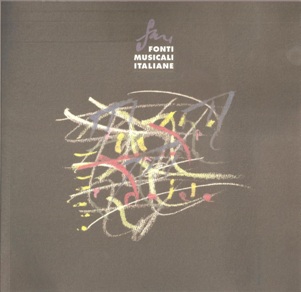Una miscellanea di edizioni musicali del primo Seicento
Abstract
A miscellanea of early seventeenth century musical editions
Fifty years ago a collection of eleven musical editions, published at Venice and Milan between 1613 and 1649, vanished from the Library of the Padua Conservatory of Music (at that time the “C. Pollini” Musical Liceo). Reappearing a short while ago in its original habitat, it has finally been possible to study the musical contents and to assess the artistic value. The editions were bound together in a single volume on whose cover is printed Miscellanea / Raccolta di Musica di / Autori vari. The eleven editions contain for the most part vocal compositions with secular and (in a few cases) moralistic texts for one to four voices, generally with basso continuo or guitar accompaniment; monody and bicinium are predominant expressions of the Miscellanea, as is also the presence of the guitar as harmonic support of the voices. The musicians concerned betray a marked preference for the musical milieu of northern Italy on the part of whoever organized the collection; the editorial format, too, is identical in all eleven editions.
A point of particular interest arises from the fact that only four editions were already known in musicological circles. Collections like RISM and NUOVO VOGEL had previously listed other examples (very few in actual fact) preserved in European libraries: Giovanni Felice Sances’ Capricci poetici for 1-3 voices (Venice, B. Magni, 1649); Filippo Vitali’s Arie a 1, 2, 3 voci (Venice, Magni, 1622); Tomaso Cecchino’s Amorosi concetti op. VII (Venice, G. Vincenti, 1616); Filippo Laurenzi’s Arie a una voce (Venice, B. Magni, 1643).
Instead, there are seven sources in this unique collection which are so far unknown in musical bibliography: Il secondo libro di arie e villançicos e cancioncillas for 2 to 3 voices, accompanied by the Spanish guitar of Benedetto Sanseverino (Milan, F. Lomazzo, 1616); Francesco Giuliani’s Soavissima lira d’Orfeo (Venice, B. Magni, 1627); Michelangelo Brunerio’s Bassi concenti (Venice, B. Magni, 1641); Domenico Pellegrini’s Pietosi affetti (Venice, A. Vincenti, 1646); the secular monodic anthology Orfeo. Musiche de diversi autori eccellentissimi da cantarsi a una e due voci (Venice, B. Magni, 1613) with music by Giovanni Priuli, Bartolomeo Barbarino, Giovanni Battista Grillo, Giulio Caccini, Francesco Rasi, Giovanni Sansone, Luigi Grani and Eleuterio Dazzi. Next, Marcantonio Aldigatti da Cesena’s Gratie et affetti amorosi (Venice, Stampa del Gardano, 1627) and the Primo libro di madrigali a 2, 3, 4 voci of the Genoese Giovanni Maria Costa (Milan, G. Rolla, 1634).
As a whole, the collection represents a rich harvest of music sources involving musicians who had a close and frequent acquaintance with lute or guitar, as can be gathered from their biographies (for the few well-known) or from the title pages of the editions themselves.
Downloads
Published
Issue
Section
License
© CIDIM
Tutti i diritti riservati


